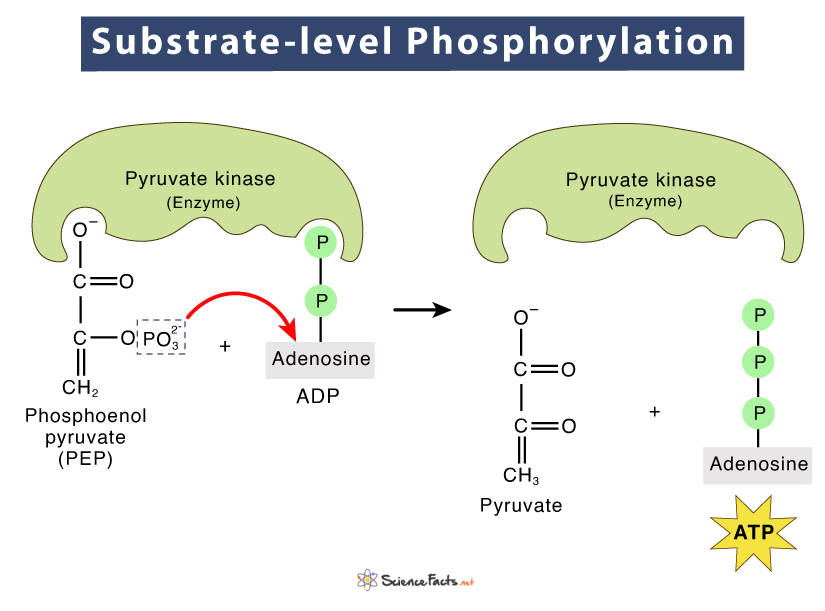Substrate-level Phosphorylation
Substrate-level phosphorylation is a metabolic reaction forming ATP or GTP through the transfer of a phosphate group (PO43-) from a substrate to ADP or GDP directly. Being an exergonic reaction, it releases some free energy while breaking the phosphate group from the substrate. This released energy is utilized to phosphorylate the ADP or GDP.
When and Where Does Substrate-level Phosphorylation Occur
In living cells, it occurs during glycolysis (in the cytoplasm) and the Krebs cycle (in the mitochondria). Thus, substrate-level phosphorylation takes place both in the presence and absence of oxygen during glycolysis. However, in the Krebs cycle, it happens strictly in an aerobic environment.
Substrate-level Phosphorylation in Glycolysis
Here, substrate-level phosphorylation happens in two separate steps:
Step 1: First, a phosphoryl group gets transferred from 1, 3-bisphosphoglycerate to ADP, forming 3-phosphoglycerate (3PG) and ATP. This step is catalyzed by phosphoglycerate kinase (PGK), giving off 2 ATPs.
2 (1,3-bisphosphoglycerate) + 2 ADP → 2 (3-phosphoglycerate) + 2 ATP
Step 2: Second, a phosphoryl group is transferred from two phosphoenolpyruvate (PEP) molecules to ADP, forming two pyruvate molecules and ATPs. The enzyme pyruvate kinase catalyzes the reaction.
2 (Phosphoenolpyruvate) + 2 ADP → 2 Pyruvate + 2 ATP
Thus, in glycolysis, 4 ATPs are produced from 1 molecule of glucose.
Substrate-level Phosphorylation in Krebs Cycle (Citric Acid Cycle)
The only step where substrate-level phosphorylation happens in the Krebs cycle is:
A phosphoryl group is transferred from succinyl-CoA to GDP, forming succinate and GTP. This step is catalyzed by the enzyme succinyl-CoA synthetase, producing 2 ATPs per glucose molecule (since the cycle runs twice and two pyruvate molecules enter the Krebs cycle).
- 2 Succinyl-CoA + 2 GDP → 2 Succinate +2 GTP
Importance of Substrate-level Phosphorylation
- Unlike oxidative phosphorylation, substrate-level phosphorylation and oxidation do not go hand in hand. It is a much quicker and more efficient source of ATP and GTP to the cell than oxidative phosphorylation during cellular respiration.
- As the process can occur under aerobic and anaerobic conditions, it is a vital energy-yielding process. It helps in the respiration of oxygen-depleted muscle cells, human RBCs that lack mitochondria, and even during the fermentative growth of microorganisms.
-
References
Article was last reviewed on Friday, October 7, 2022




